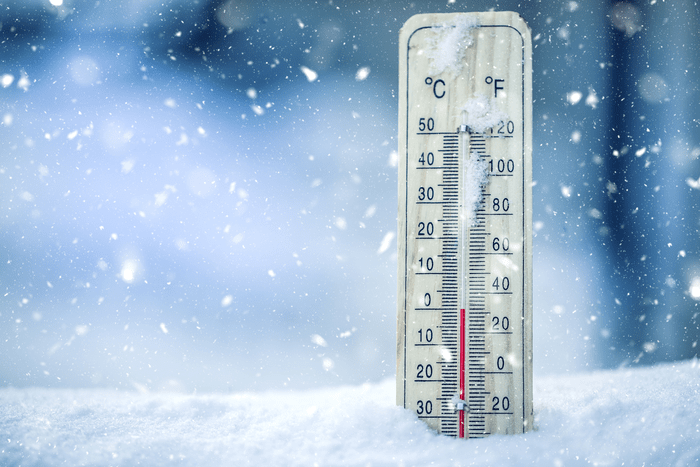
As deep winter approaches, it’s time to think about temperature-related emergencies. Regions across the country will experience freezing temperatures, along with sleet and snow. As a prehospital professional, you will be called to treat patients suffering a range of weather-related issues. To prepare for the onslaught of winter, let’s review some of the dangers of hypothermia.
Temperature Regulation in the Body
As warm-blooded (homeothermic) creatures, humans can regulate their body temperatures, maintaining a steady state at around 98.6° Fahrenheit (37° Centigrade). Normal body temperature is regulated by the hypothalamus, known as the thermoregulatory center of the brain. It maintains body temperature via neurologic and hormonal means but can be disrupted through traumatic injury.
Humans rely on two systems to regulate body temperature:
- Behavioral regulation: governed by thermal sensation and comfort, requiring a conscious effort to reduce thermal discomfort, by adding clothing or seeking shelter from the elements.
- Physiological thermoregulation: a process of sensory feedback to the brain, which involves a slower response than behavioral regulation.
The body produces heat as a byproduct of metabolism. Heat is transferred throughout the body via the circulatory system, which is why skin feels cool when blood is shunted away. Shivering is a means of increasing metabolic heat production, and usually occurs as the core temperature drops from 98.6° Fahrenheit (F) to between 94° and 97° Fahrenheit. Maximal shivering can increase heat production at five to six times the resting level, but subsides once the core temperature drops to around 88° Fahrenheit.
The largest organ in the body, the skin, also regulates body temperature by balancing heat production with heat dissipation.
The body is prone to dehydration in cold weather. Colder, drier air evaporates sweat more readily, increases respiratory heat and fluid losses, and produces cold-induced diuresis, causing frequent urination. All of these processes can increase the risk for hypothermia.
Ranges of Hypothermia
Different stages of hypothermia produce various signs and symptoms. The temperature classifications are as follows:
- Mild Hypothermia: 95.0 to 89.6° F
- Moderate Hypothermia: 89.6 to 82.4° F
- Severe Hypothermia: 82.4 to 68.0° F
- Profound Hypothermia: 68.0 to 57.2° F
- Deep Hypothermia: <57.2° F
Hypothermia is generally broken down into two classes.
- Primary hypothermia occurs when a healthy, unprepared individual is caught in adverse weather conditions, exposed to acute or chronic cold temperatures.
- Secondary hypothermia occurs after a patient’s systemic disorder, which can include trauma, sepsis, carcinoma, or hypothyroidism. Keep these factors in mind, especially when treating elderly patients, many of whom suffer from preexisting conditions. As always, keep trauma patients warm!
The Body’s Reaction to Hypothermia
As the core temperature begins to drop, the body’s major organ systems are affected, especially the renal, cardiac, and central nervous systems. Initially, the body will produce shivering and vasoconstriction in order to increase the core temperature. This increases the heart and respiratory rate, and the blood pressure.
As the body temperature falls below 95° F, these reactions diminish and are eventually inhibited. Once the body’s responses stop, the core temperature plummets. At 85° F, the metabolism and cardiac output are diminished by half. Cellular hypoxia sets in, as ventilation and perfusion become inadequate, leading to eventual metabolic and respiratory acidosis.
The heart rate will slow as the body temperature drops, at which point ventricular fibrillation (VF) becomes a risk as the core temperature approaches 80°F. Careful handling of these patients is essential to prevent VF. The patient must be rewarmed before CPR is initiated to prevent VF. Thus, the adage, “The patient is not declared dead until they are warm and dead.”
Staying Safe
For first responders working in extremely cold environments, your safety is just as important as patient safety. These are a few recommendations for preventing cold-related injuries among you and your crews:
- Be cautious of risk factors for cold injuries: fatigue, dehydration, undernutrition, tobacco use, etc.
- Reduce exposure to cold, wet, and windy conditions whenever possible.
- Avoid alcohol in cold environments.
- Keep extra protective clothing in your vehicle in case you become stranded.
- Always wear gloves—frostbite can occur rapidly when skin touches metal objects!
Protecting your patient means first protecting yourself. Stay alert to the dangers of hypothermia, and avoid becoming a victim.
Editor's Note: This blog was originally published in January, 2024. It has been re-published with additional up to date content.
















